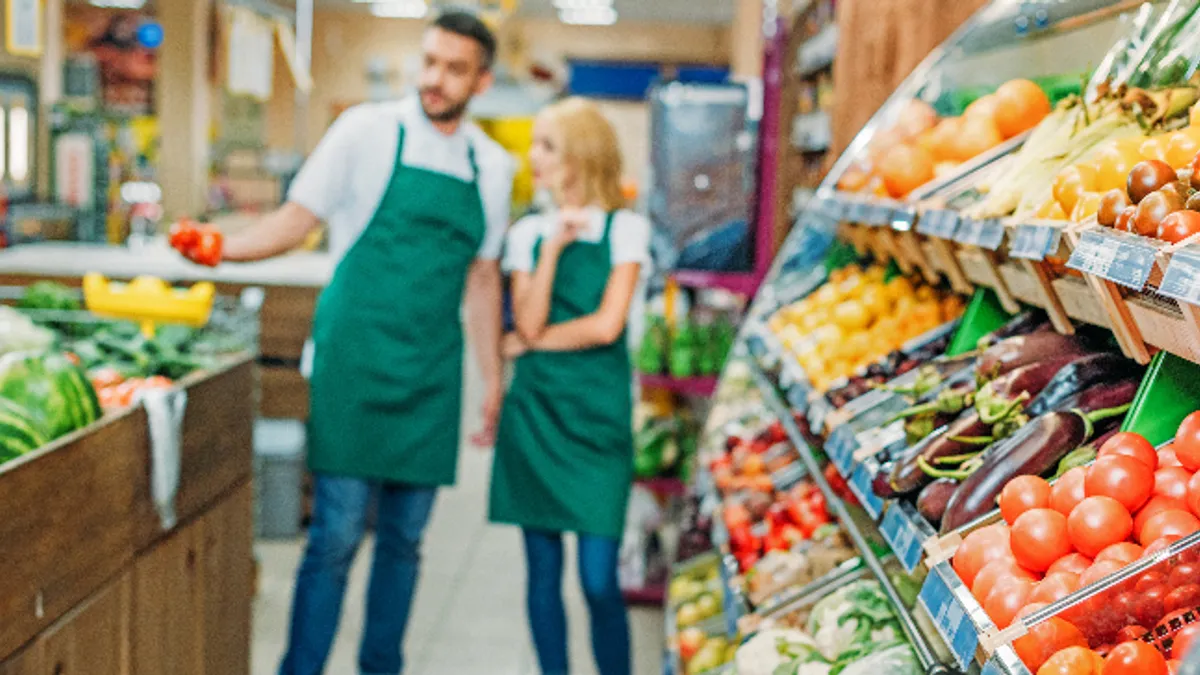For decades, retailers have been adjusting to the new normal: a state of constant change. If anyone has earned a break, it’s them — but change and its accompanying challenges won’t stop anytime soon. If anything, last year’s trends suggest competition is only supposed to get stiffer.
E-COMMERCE KEEPS GROWING
The ongoing consumer shift to online shopping is driving most of today’s retail trends. A 2018 RELEX survey of U.S. grocers revealed that 71% have already extended beyond brick & mortar stores into online retail. This makes sense, given FMI and Nielsen’s prediction that consumers could be spending $100B a year on online groceries by 2025.
The challenge of e-commerce isn’t a failure to meet customer expectations, but a failure to drive profit in the process. Today’s retailers are absorbing the costs of rising customer expectations, such as free shipping and immediate delivery windows. These services, as they’re currently executed, simply aren’t sustainable in the long run.
They drag on operational efficiency, in large part because picking and last-mile costs consistently eat into profits. It’s no surprise, then, that retailers like Kroger and its UK partner, the e-grocer Ocado, are developing automated options for picking and fulfillment.
CONVENIENCE AND READY-MADE FOODS
Add to online grocery the rising trends of convenience, takeout, meal kits and ready meals, and grocers suddenly find themselves thrust into competition with the food service sector. One challenge in this new competitive relationship is that grocery doesn’t lend itself to delivery as easily as does food service because of considerable picking and transportation costs. While restaurants benefit from opportunities like UberEats, grocers have yet to find a true equivalent after last-mile costs.
Restaurants might even move into the meal kit space soon, as grocers challenge restaurants through expansion into “grocerant” options like in-store cafés. As they do so, grocers also face new demand forecasting challenges, but we’ve fortunately seen development in this area in the form of bills of material (BOMs). The BOM, a term borrowed from manufacturing, allows grocers to forecast the individual items in each recipe for products like sandwiches and salads that are created on-premise.
Other changes in shopping habits are reflected in evolving store formats, with hyperstores giving way to neighborhood convenience stores. Lidl’s initial large-store push into the US, for example, is being reevaluated as they look more closely at smaller store formats.
SUSTAINABILITY AND ECOLOGICAL CHOICES
Consumer and corporate interest in sustainability and environmental impact has been a major trend this year, and will only grow in importance going forward. The trend is currently clearest in Europe — especially in the UK, where supermarkets are responding. German supermarket Bünting has gained considerable attention and customer approval for a sharp reduction in its CO2 footprint thanks to a radical optimization of its vehicle journeys. US retailers should expect to experience a similar shift in the coming years with supermarkets offering more eco-friendly choices and developing more sustainable supply chains.
Millennial consumers are increasingly influencing the way Americans eat and shop. In particular, their healthier food choices often reflect their concerns about sustainability and the environment. Sustainable supply chain practices are especially important with premium fresh products (another upward trend) because they go beyond appealing to consumer values. Minimizing spoilage through accurate forecasting directly impacts the bottom line because a single item going bad can erase profits from multiple sales.
WORKFORCE MANAGEMENT AND FINDING TALENTED EMPLOYEES
The final major trend of 2019 is an unusually tight labor market, with US unemployment at a historic low. Businesses seeking to attract and retain both permanent and seasonal workers are competing for talent by offering higher wages, more benefits and even hiring bonuses.
As they increase these incentives, food retailers are simultaneously developing strategies to reduce workforce costs by more accurately planning their labor needs. Grocers are getting more use out of their supply chain demand forecast data by using it throughout their organizations to support capacity and workforce optimization both in distribution centers and in stores. They are also sharing planning data with suppliers to reduce friction points and improve their collaborative relationships, driving efficiency and savings for both grocers and suppliers.
The coming year will be hard on both brick and mortar and e-commerce retailers — there’s simply no getting around that. Luckily, these trends from 2019 suggest that retailers are being quite thoughtful and deliberate in their retail planning strategies and can see continued growth despite the difficult climate.










